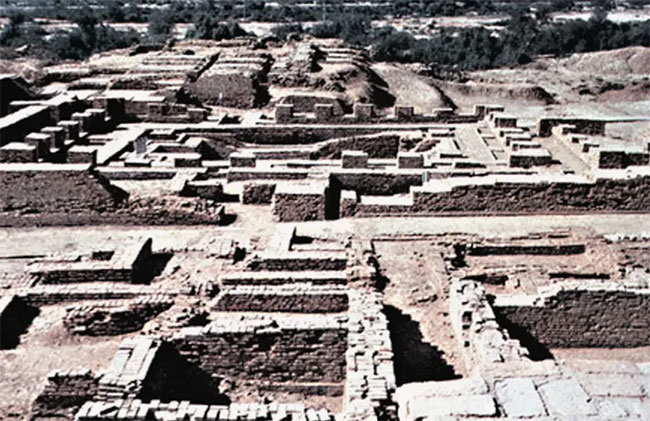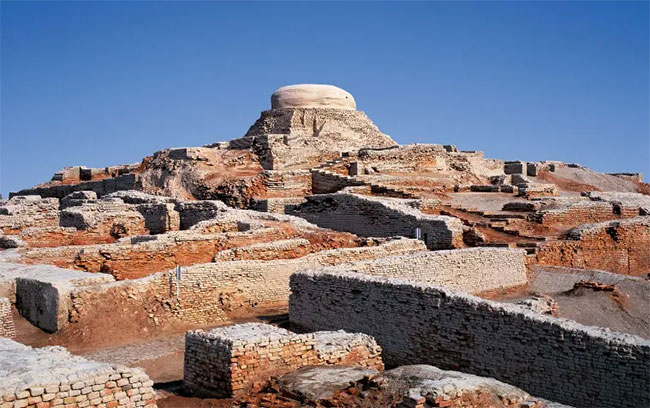3 natural disasters have not found the exact cause
Since birth on earth, humans have evolved continuously, and eventually evolved to become the most superior beings on earth, understanding and discovering almost everything in this world. We've made so much progress, whether it's flying in the sky or on the ground, running or swimming in the sea, humans can almost know one or two. Even space beyond the earth, now also has humans involved.
However, in the end, human exploration is still limited. In today's society, a lot of scientific and technological means can indeed be used to explore the past and present, but human capacity is also limited. We do not have the ability to travel through the past and the future, so very little information about the past and the future is known. For example, in human history, there have been three strange natural disasters, people at that time did not know the cause, and people today still cannot solve the secret.

The site of this natural disaster is also known as "Mohenjo-daro".
After millions of years of development, humans have evolved into advanced beings that dominate the blue planet. The reason is because humans are always developing and have discovered a lot of things on this earth. People can take advantage of the situation, do what you want according to local conditions, and achieve success.
However, so far, mankind has made great progress, but this does not mean that humanity has known all the secrets in this world, otherwise there would not be many unsolved mysteries. There are a lot of strange phenomena in the world today, and humans have not yet been able to use technology to get answers. Things that happened in the mists of history, or didn't happen in future time and space, people don't even know more.
For example, although technology is advanced, it is possible to predict some natural disasters and take appropriate measures to reduce damage, but it cannot be 100% avoided. In the history of the world, there have been 3 natural disasters, but so far no one has given a scientific answer.

The characteristic of Mohenjo Daro is the uniform architecture in city construction.
The first natural disaster to occur in the famous Indus River region, the land of what is now Pakistan and western India is considered the earliest known urban culture of the Indian subcontinent. The site of this natural disaster is also known as "Mohenjo-daro". At that time, an archaeologist discovered traces of an ancient building in this area, after investigation and research, it was found that it was a building dating from before 2600 BC. Mohenjo Daro is characterized by its uniform architecture in city construction, especially in water supply and sewage systems. However, archaeologists determined the city had been completely buried in the mud of the Indus River 4,500 years earlier. The city was built on an artificial foundation made of bricks,
Because archaeologists found that the fall of the city was an unnatural decline, but a sudden interruption, as if some kind of natural disaster had occurred. There are also some dead bodies inside. These corpses took various forms, and they seemed oblivious to the disaster, because they seemed to be busy with their own business. When disaster suddenly struck, they didn't realize it, so they died quietly, as if the pause button was suddenly pressed, and all civilization was abruptly interrupted.
Many scientists were also very interested in such a situation, some thought that it was a sudden explosion, so people at that time died suddenly and could not avoid it. However, this claim needs to be verified, since before 2600 BC, there was no such thing as gunpowder theory.
Others believe it was a natural disaster caused by astronomical phenomena, i.e. lightning. Under the influence of different radiations in and out of space, many black lightning bolts gather together to create high temperatures and then explode, and release toxic gases until they die.

The explosion caused a fire that wiped out 80 million trees and countless animals over an area of more than 1,300 square kilometers
Natural disasters occur in southern Asia, and strange natural disasters occur on the Tunguska River in East Siberia (Russia) to the north. In 1908, a fireball exploded over the Tunguska River, and the sparks immediately fell into the forest, causing a raging fire. The fire wiped out 80 million trees and countless animals on an area of more than 1,300km², the sky was red, the surrounding cities were also affected, the scene was as terrifying as the eruption of the Roman volcano Pompeii.
As for such natural disasters, people naturally make many conjectures. At that time, the explosive power of the explosion was more than the atomic bombs at Hiroshima and Nagasaki, so it was suspected that the explosion on the Tunguska River was an atomic bomb explosion.

At that time, the destructive power of the explosion was more than the atomic bombs in Hiroshima and Nagasaki.
However, this explosion occurred in 1908, when the whole world was still in the second industrial revolution, and technologies such as the atomic bomb were only appearing in the third technological revolution, so it might not be an atomic bomb explosion. But that power was too great, so it is suspected that the explosion was caused by the asteroid hitting the earth at the time. But the assumption that the asteroid hit the earth is obvious is not confirmed. Since there is no huge crater around the Tunguska River, its impact on Earth is questionable. To this day, people are still thinking about the real reason for the explosion.
The last strange natural disaster occurred in the Ming Dynasty in China. In 1632, suddenly there was a loud noise in the Wang Gong factory in the southwest corner of the capital Beijing, then thick smoke was seen in the sky, and a mushroom cloud like the explosion of an atomic bomb and Hot air bomb rises.
After the explosion occurred, people began to clean up the explosion site and record preliminary data. According to the historical record of the Ming Dynasty, the explosion killed more than 20,000 people at that time, the range of the explosion spread to 13 miles, although there was no war but it was like war, the entire area The explosion was like a smelter in hell on earth.
Then the emperor sent someone to investigate, but to no avail. Of course, in this case, there are still bold conjectures, there are also people who say that there was a gunpowder explosion. But in the Ming Dynasty, even with the great development of gunpowder technology, the destructive power of explosives could not be so great. Of course, there are still people who say that a meteorite fell from the sky, but there are no records in history books, we have no way of knowing the real situation, nor do we know if a meteorite really appeared or not. So far, the cause of the explosion is still unknown.
The world is very large and there are still many things we do not know, especially natural disasters that occur in nature. What we know now is nothing but volcanic eruptions, landslides and other disasters, and we also know the scientific principles, but there are some things that are not based on science. It can be explained clearly, especially since there is a period of time and space in between, so whether it's the civilization in which Mohenjo-daro came to a sudden stop or the eruption of Tunguska. we have no way of knowing. to know the real reason.
However, human development potential is limitless, the dream of flying in the sky that was previously only imaginable has now become a reality. Perhaps at a certain level of technological development in the future, many unsolved mysteries of the past will have an answer. However, until there is an answer, each of us cannot help but marvel at the unknowns, and at the same time have to develop strongly technology so that the real answer will appear soon.
- Japan: The country suffers from many natural disasters and the way to protect people makes the whole world admired
- 2012: Many natural disasters, no disasters
- Talking numbers about the consequences of natural disasters
- More than 220,000 people died from natural disasters in 2008
- 5 most catastrophic natural disasters in human history
- The worst natural disasters in 2015
- The era of super disasters in Asia
- Looking back at the 10 worst natural disasters in American history
- 10 worst disasters in US history
- Australia is trying to overcome the consequences of natural disasters
- 2010 - the number of people killed by unusually high natural disasters
- The most severe places of natural disasters on Earth (Part 1)
 The truth about the mysterious red-haired giant at Lovelock Cave
The truth about the mysterious red-haired giant at Lovelock Cave Inunaki Tunnel: The haunted road leading into Japan's 'village of death'
Inunaki Tunnel: The haunted road leading into Japan's 'village of death' The mystery of the phenomenon of human reflection before dying
The mystery of the phenomenon of human reflection before dying 6 mysterious phenomena, although science has been developed for a long time, still cannot be answered
6 mysterious phenomena, although science has been developed for a long time, still cannot be answered